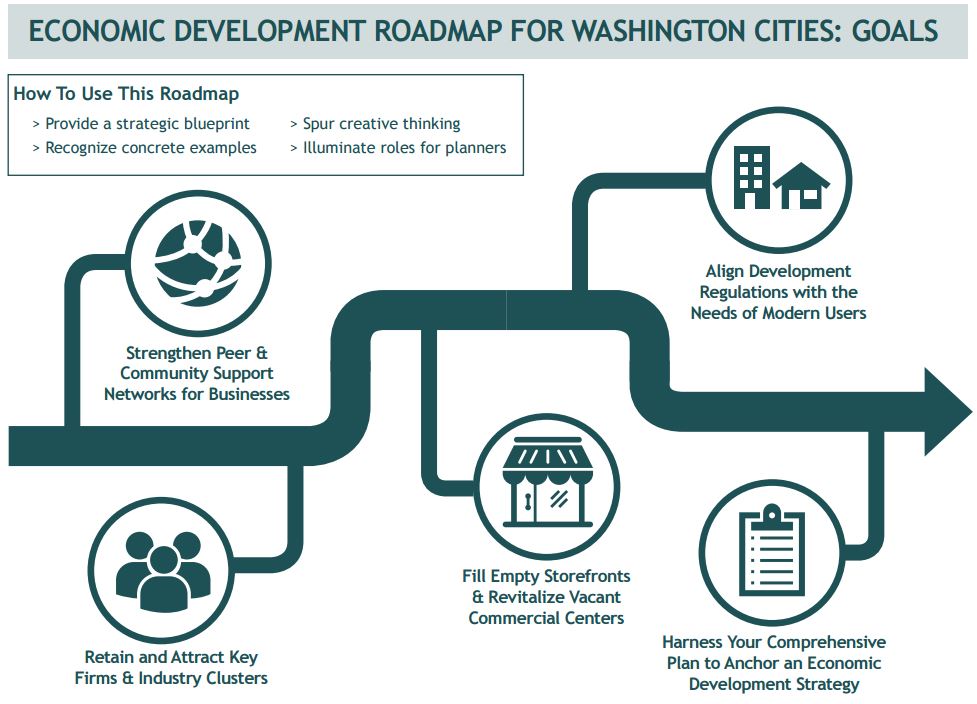- About Us
- Events & Training
- Professional Development
- Sponsorship
- Get Involved
- Resources
Ten Big Ideas: Support Economic DevelopmentBy Mark Goodman, Yolanda Ho, and Elliot Weiss Planners as economic development leaders
Through our work we explored the intersection of planning and economic development and the ways in which planners can contribute to building economically vibrant communities. To that end, we wanted to recognize two foundational roles for planners in economic development. The first role relates to a planner’s ability to guide placemaking efforts in his or her jurisdiction. Across communities of all sizes, effective placemaking strategies are essential to developing and maintaining a comparative advantage and supporting a community’s local economy. Great placemaking animates public and private spaces, rejuvenates structures and streetscapes, improves local business viability and public safety, and brings diverse people together to celebrate, inspire and be inspired. The unique elements of a community become critical components in improving the livability of a place—and meeting economic development goals. There are tangible economic benefits associated with creating networked pedestrian-friendly places that are walkable and active. For example, a 2009 study found that homes in more walkable locations command a premium of $4,000 to $34,000 over houses with just average levels of walkability in the typical metropolitan area. A University of Arizona study also found that Walk Score, a common metric used to measure how connected and pedestrian-friendly a place is, predicted higher office and retail rents as well as higher incomes for areas with higher scores. In turn, these economic benefits yield higher tax revenues, and quality places attract talented people and motivated firms. In this way, planning offers a unique intersection with economic vibrancy.
The second role relates to the planner’s responsibility to prepare portions of the comprehensive plan. Planning and economic development professionals often recognize the gap between a city’s comprehensive plan and its economic development strategy. Where does the economic development element fit within a city’s overall hierarchy of vision statements, subarea plans and technical studies? The economic development element has the potential to do more for a city in terms of supporting and justifying an actionable economic development strategy; the element can and should serve as an economic justification for infrastructure investment and land use policy. Innovative approaches to economic development and planning abound in Washington State and we’ve tried to highlight a few as part of “Ten Big Ideas: Support Economic Development.” We suggest you visit the “Ten Big Ideas” site (www.washington-apa.org/ten-big-ideas) and think about how your role as a planner relates to economic development and all of the Ten Big Ideas. For more information, please reach out to Mark at [email protected] |



